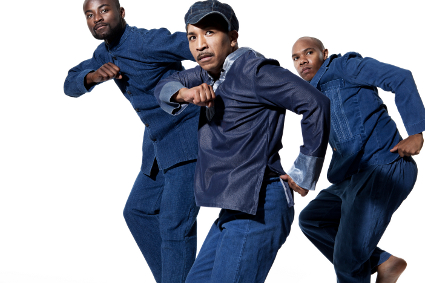At Restoration Plaza, dancer Ron Brown preps for Joyce opening

To some extent all rehearsal is the same. From the outside at this rehearsal at Restoration Plaza in Bedford-Stuyvesant, not much seems to happen. Performers talk quietly to each other, examining small moments of movement. Backstage paths are decided based on where costume changes are to be placed, costumes are discussed. On stage floor patterns are “marked,” indicated rather than danced dancers process the patterns. Hands show footwork in the air. Voices talk steps through—”Is that 4,3,2?” Suddenly, feet break into the movement of a phrase.
“Which column are you in?” someone asks.
Brooklyn boy Ronald K. Brown(‘s)/Evidence, A Dance Company opens its Joyce Theater season on July 9 with On Earth Together/Everybody at the Table featuring the music of Stevie Wonder sung live by Grammy-winner Gordon Chambers and Caron Wheeler (formerly of Soul II Soul.) A special opening night performance features singing by Andrea Sojola, NaTasha Yvette Williams, and Trevon Davis, members of the cast of The Gershwins’ Porgy and Bess. The singers, even when heard in rehearsal with only a piano, add energy and richness missing with recorded music.